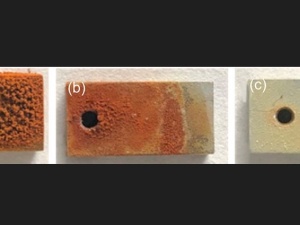Effect of Combined Grinding–Burnishing Process on Surface Integrity, Tribological, and Corrosion Performance of Laser-Clad Stellite 21 Alloys
Abstract
Herein, the influence of the grinding–burnishing on surface integrity, mechanical properties, and corrosion performance of Stellite 21 alloys coating deposited by laser cladding is investigated. The as-clad specimens are first ground followed by further modification by ball burnishing at forces of 424 N and 509 N. Results show that the grinding–burnishing enhances surface finish by lowering Ra from 2.6 to 0.73 μm and Rz from 13 to 4.9 μm, respectively. Surface porosity is found to decrease from 3.8% to 0.9%. Hardness is increased from 609 HV to 702 HV, with a surface alteration as deep as 250 μm, while wear resistance increases by reducing worn volume from 4.15 to 2.95 mm3. Because of high hardness, the grinding–burnishing increases impact resistance by lowering indent depth by 20%. Grains flatten and surface undulations are remarkably reduced due to burnishing. Finally, grinding–burnishing at 509 N improves the corrosion resistance by increasing positive corrosion potential from −0.41 to −0.14 V and lowering corrosion current density from 6.34 × 10−4 A cm−2 to 2.19 × 10−5 A cm−2, as compared to grinding. This synergistic grinding–burnishing can be a plausible post-treatment route for the laser-clad alloys.



